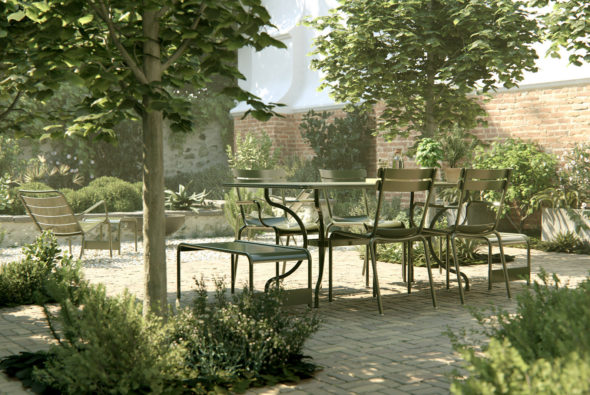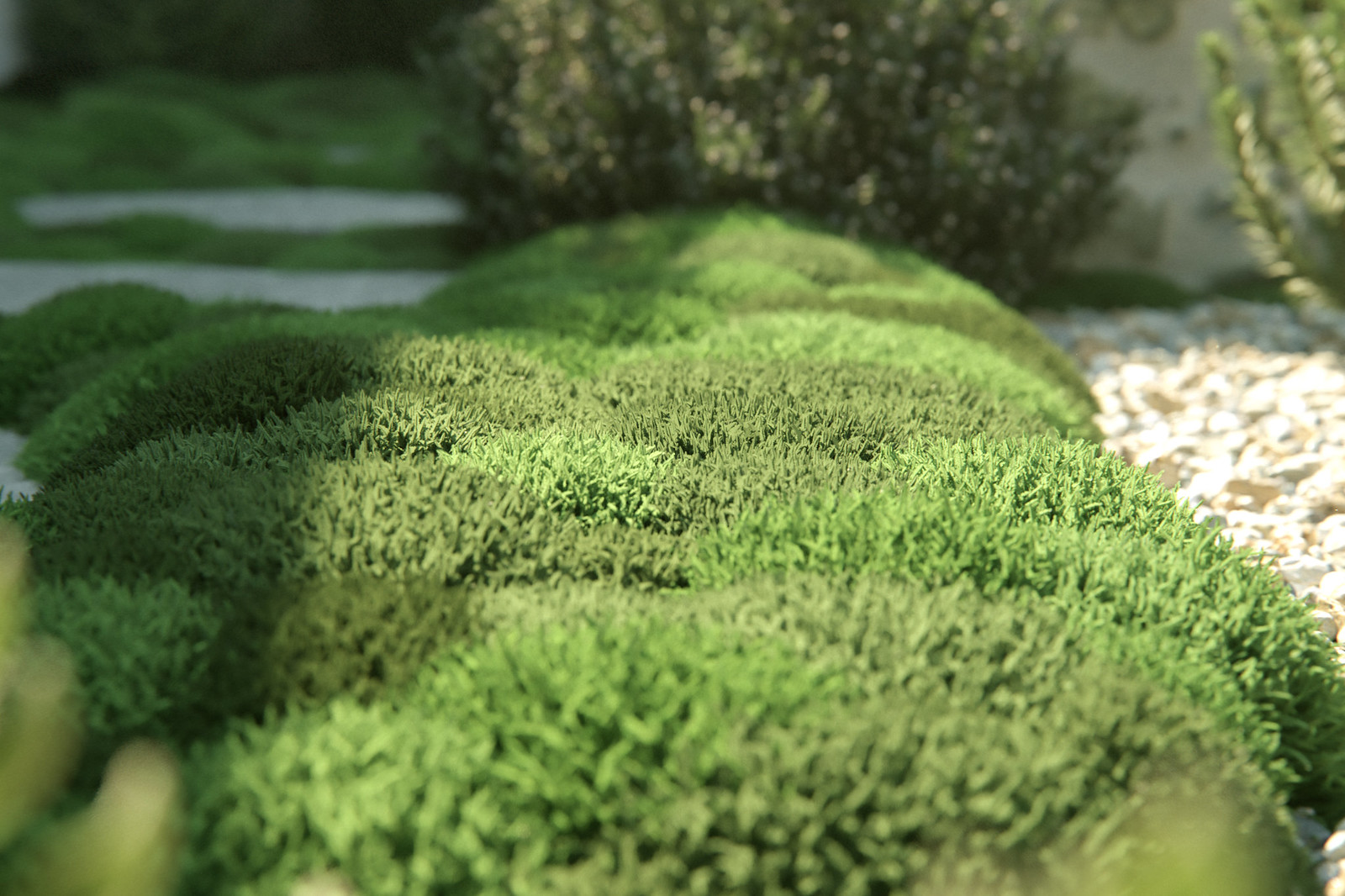Luxembourg’s Garden
A few weeks ago, I started modeling Fermob’s Luxembourg line of outdoor furniture–itself a sensitive revamping of the original furniture of the Senate’s gardens in Paris. I wanted to showcase them in an outdoor setting, and that little project kind of took on a life of its own. I had fun experimenting with various techniques to make vegetation and developing the high-summer look I was aiming for.
The plants were the main challenge and the most fun part of the project. Below is a random list of the techniques I played with.
- The main hero trees in the garden surrounding the table were an attempt at combining the GrowFX workflow with scanned data for the trunks. Instead of stitching together the GrowFX tree with the trunk scanned model as I’d done before, this time, I displaced the trunk part of the GrowFX model by projecting it on a scanned trunk asset. This provides the rough displacement while a normal map takes care of the smaller details.
- I used leaves scanned with Dabarti Capture on most of the trees, taking advantage of the amazing normal maps this tool can generate.
- The ivy (or is it vine?) was my first attempt at using GrowFX for climbing plants thanks to the Object React modifier. For the leaves, I used scanned ivy (or vine?) leaves which I distributed as instances. This made for a very heavy mesh, which had to be converted to a proxy.
- For the box bushes, I modeled a few single branches in GrowFX and distributed these on bush-shaped meshes with Itoo’s Forest Pack, using this method.
- The moss followed a similar workflow, explained here.
- Most of the other plants are standard GrowFX creations, some using GrowFX’s built-in leave meshes and others instances for the leaves and flowers.
- The big cactus-like plant at the back of the image above was modeled from scratch in Max.
Other technical details:
- Forest pack was used extensively to scatter the vegetation, moss and pebbles (home-made scanned rock assets downscaled a bit).
- The bricks textures are from the excellent textures.com. Most of the other textures, including the rock-and-plaster wall at the back, are mine.
- The scene uses V-Ray’s environmental fog, but rendered as a separate pass and comped to speed up rendering.
- Post-production, as always, was done in ArionFX.
- You can check out some close-ups of the Luxembourg chair models on my Instagram feed.
- As for references, the garden is loosely based on this creation by landscape designer Kate Seddon in South Yarra.
As always, feel free to critique and comment below. You can see higher-res versions of the images here.




















Оставить комментарий
Ты должен быть Вход опубликовать комментарий.